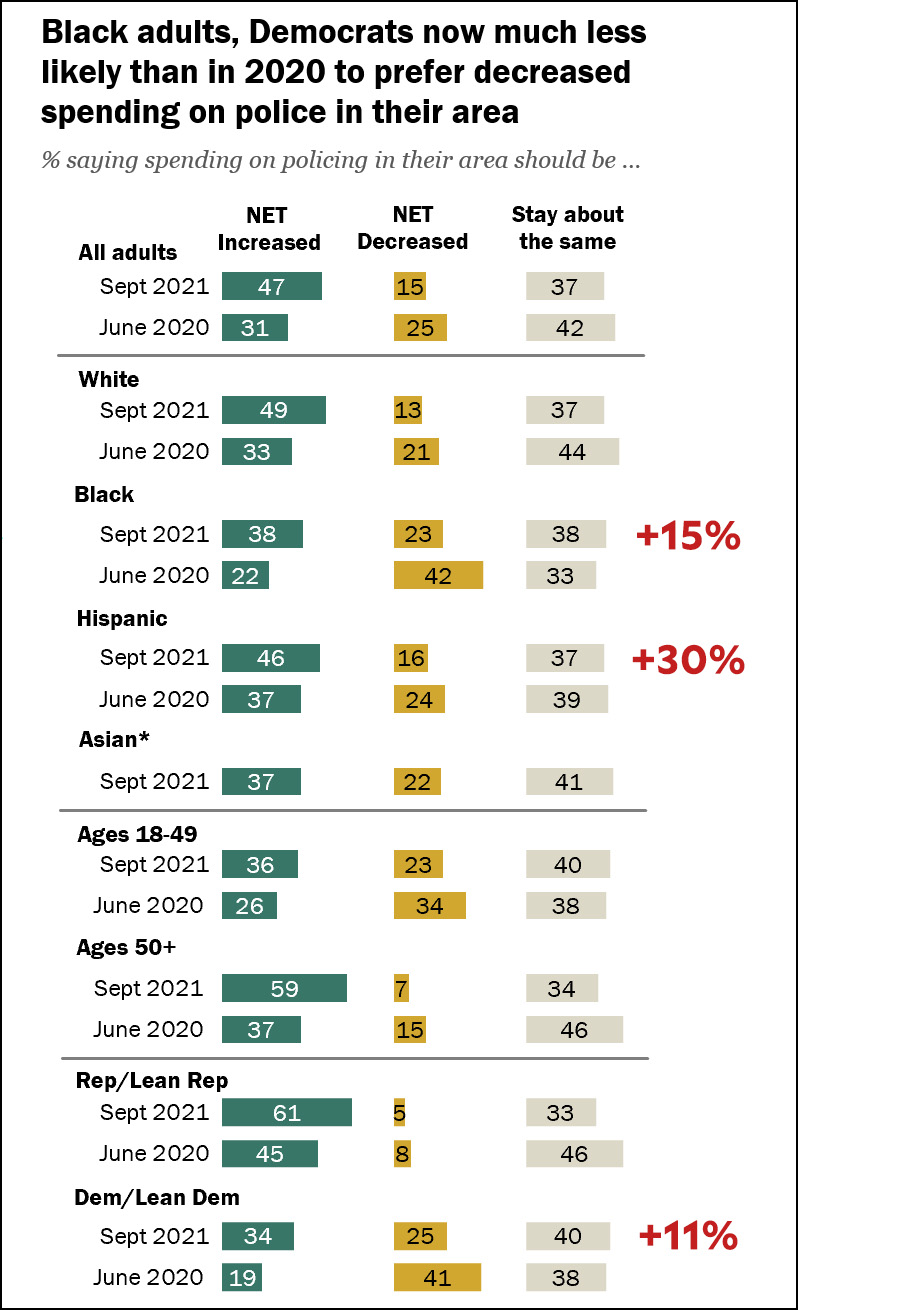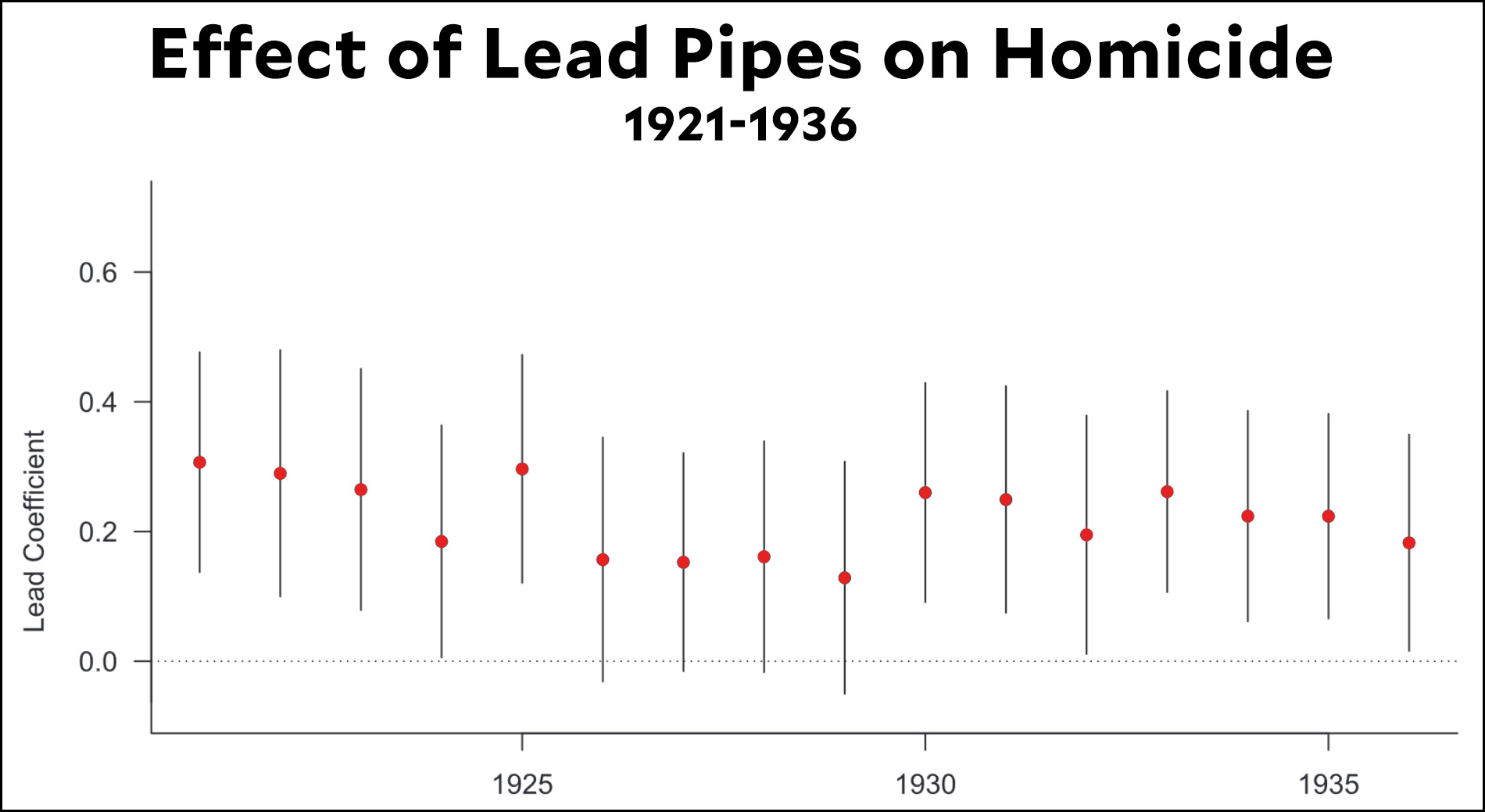The next big scam will be lead cubes wrapped in a thin layer of tungsten and sold for thousands of dollars. They will come with certificates of authenticity from the International Society of Metallurgists and will be limited to five to a customer. You heard it here first.
Month: October 2021
Chart of the day: Consumer spending slows down in September
Consumer spending slowed down last month, which is hardly a surprise since GDP growth also slowed down. So instead of a boring chart of real consumer expenditures, I tried to think of something a little more interesting. Here it is:
 This shows goods as a share of all consumer spending. When the pandemic started, spending on services plummeted because we were all trying to stay away from other humans. As a result, spending on goods became a bigger part of household spending, peaking in March at 42% of all spending. This finally turned around a bit as vaccines started to roll out and personal services (haircuts, nails, etc.) began to reopen. However, spending on goods remains higher than usual.
This shows goods as a share of all consumer spending. When the pandemic started, spending on services plummeted because we were all trying to stay away from other humans. As a result, spending on goods became a bigger part of household spending, peaking in March at 42% of all spending. This finally turned around a bit as vaccines started to roll out and personal services (haircuts, nails, etc.) began to reopen. However, spending on goods remains higher than usual.
UPDATE: The original version of the chart showed the wrong dates. It's correct now.
Everyone is now in favor of higher police funding
By now, we all know that "Defund the Police" doesn't actually mean that. It merely means reducing funding a bit. Also, we're told, anyone who thinks this slogan might have hurt Democrats in the 2020 election is an idiot. There's precisely zero evidence it had any effect. Zero, by God.
Anything is possible, I suppose, though common sense suggests otherwise. But let's look in on public opinion to be sure:
 Back at the height of the George Floyd protests, there was a brief moment when decreasing police funding was relatively popular among some groups. But it didn't last long. There is currently not a single demographic group—not Black adults, not Hispanic adults, not Democrats, not young people, not anybody—who favors a cut in police funding. That's some nice Overton windowing there.
Back at the height of the George Floyd protests, there was a brief moment when decreasing police funding was relatively popular among some groups. But it didn't last long. There is currently not a single demographic group—not Black adults, not Hispanic adults, not Democrats, not young people, not anybody—who favors a cut in police funding. That's some nice Overton windowing there.
Facebook is a reflection of society, not an agitator
I asked for research, I got research:
In a recent article, we show that most people in the United States and Denmark agree that online discussions are much more hostile than offline discussions. The results of our study, however, suggest that it’s not the Internet that transforms otherwise nice people into angry trolls. People who are jerks online are jerks offline, too. We do find that the kind of people who are obsessed with politics are often frustrated, angry and offensive. But they tend to rant about politics in offline interactions as well.
....This analysis provides a different understanding of why so many people find the Internet to be a politically ugly place. Frustrated people are also hostile in offline discussions, but these discussions occur in private....The big difference between online and offline discussions is that we witness a lot more acts of hostility online, not so much against ourselves or our friends, but against strangers.
In other words, the Internet doesn’t stir up hostility. Instead it creates and facilitates what we call “connectivity” among groups with shared politics, and between trolls and their victims. It allows individuals who are predisposed to be hostile to accomplish their goals more effectively. As Facebook executives concluded among themselves, the more that controversial content is visible in the news feed, the less people enjoy it.
I don't expect anyone to pay attention to this, since minds are mostly made up on the issue of Facebook and other social media outlets. Nevertheless, the bulk of the (limited) evidence to date suggests that social media doesn't cause hostility, it merely reflects hostility that's always been there but that most of us never noticed.
Now, I think you can still argue that there's a second order effect here: Merely being exposed to so much more hostility may have a negative effect on society. I'm open to that idea. However, is there really any question that the intense political hostility we face today started way back in 2000, or perhaps 2010 at the absolute latest? And therefore something else has to be at the root of it, with social media playing, at most, a modest supporting role in later years? I don't think so.
Lunchtime Photo
Biden announces compromise bill that would cost about $200 billion per year
President Biden announced a "framework" this morning for scaled-back BBB legislation that would cost about $200 billion per year. Here are the biggest elements:
- Extension of improved Obamacare subsidies through 2025. Good.
- Universal pre-K. Good.
- Child care subsidies that limit costs to 7% of income. Good.
- Long-term care. Good idea, but probably hardly noticeable to taxpayers in the form Biden has proposed.
- One year extension of increased child tax credit. Meh.
- Lots of money for climate change, but nothing much for R&D. Such a wasted opportunity.
There are a few other items on Biden's list, but these are the biggest. Whether Sens. Manchin and Sinema are willing to sign up for this, along with Biden's proposed revenue increases, remains to be seen. The plan includes an additional 5% tax on incomes exceeding $10 million a year and another 3% tax on incomes above $25 million.
Chart of the day: Real GDP in Q3
Economic growth slowed down in Q3, presumably due to the renewed outbreak of COVID-19:
 With Delta under control and supply chain issues starting to get resolved, higher growth should probably resume in the final quarter of the year.
With Delta under control and supply chain issues starting to get resolved, higher growth should probably resume in the final quarter of the year.
The silver lining to this slowdown is that it's yet more evidence that the economy isn't overheating. This means that inflation should probably begin to taper down over the next few months.
Lunchtime Photo
I don't think the metro in Rome sets any records, but it sure has some very long escalators. I think the stations have to be fairly deep in order to avoid tunneling through ancient artifacts, which is also the reason that none of the metro lines cross the central city.


Lead pipes produced higher murder rates in early 20th century America
For some reason, a paper about lead pipes and homicide in early 20th century America is getting renewed attention this week. This seems like a good excuse to re-post my original writeup about it, which includes a link to an even earlier post with more detail about the study. Here it is.
Last year I wrote about a paper that looked at the relationship between childhood lead poisoning and violent crime rates in a whole new way. James Feigenbaum and Christopher Muller compared cities from the early 20th century that installed lead water pipes with those that installed iron pipes, and found that cities with lead pipes had higher homicide rates. Feigenbaum and Muller have now published a final draft of their paper. The basic results are below:
 As you can see, the effect is consistently positive. “Based on the lowest and highest point estimates,” the authors conclude, “cities that used lead pipes had between 14 and 36 percent higher homicide rates than cities that did not.” They present further versions of this chart with various controls added, but the results are largely the same. Overall, they estimate that cities with lead pipes had homicide rates 24 percent higher than cities with iron pipes.
As you can see, the effect is consistently positive. “Based on the lowest and highest point estimates,” the authors conclude, “cities that used lead pipes had between 14 and 36 percent higher homicide rates than cities that did not.” They present further versions of this chart with various controls added, but the results are largely the same. Overall, they estimate that cities with lead pipes had homicide rates 24 percent higher than cities with iron pipes.
As a check, they also examine the data to see if lead pipes are associated with higher death rates from cirrhosis and infant diarrhea, both of which have been linked with lead poisoning:
As expected, we observe large, positive, and statistically significant relationships between a city’s use of lead pipes and its rates of death from cirrhosis and infant diarrhea. Unexpectedly, we find that cities that used lead water pipes had higher rates of death from scarlet fever and influenza. Cities that used iron pipes, in contrast, had higher rates of death from circulatory disease, cancer, and cerebral hemorrhage. We know of no scientific literature to motivate these latter relationships.
So it looks like lead really is the culprit, and it really is associated with higher crime rates.
Click on my post from last year to get more details about both the strengths and weaknesses of this paper. As with any retrospective study like this, there are reasons to be cautious about the results. However, the main strength of this study is unquestionably important: it verifies the lead-crime link in an environment completely different from all the other studies done to date, which examine gasoline lead exposure from 1960-2010. It’s yet more evidence that lead really did play a role in the great crime wave—and the subsequent crime decline—of the second half of the 20th century.
Fox News is a stinking, toxic pile of shit
Another black eye for Facebook today. The January 6 rioter who assaulted police officer Michael Fanone was sent into a manic fury by disinformation that he—
“He came here, fired up about a stolen election,” [Judge Amy Berman] Jackson said. “Where was he getting his information? Facebook, Twitter, just watching the news?”
Brennwald, after consulting with Sibick, said that his client’s response surprised him.
“I thought it might have been OANN or Newsmax, but it wasn’t,” Brennwald said. “It was Fox News.”
“Wow,” Jackson responded.
“He was literally watching Fox News and in a manic phase that day, over a period of days,” Brennwald added.
Burn Fox News to the ground and salt the earth around their rancid headquarters. Brand everyone who works there with a scarlet fox on their foreheads. Confiscate Rupert Murdoch's wealth to pay for BBB. Exile Tucker Carlson to Hungary.
I don't even care any more how we do it. Just get rid of this toxic, treasonous pile of shit in midtown Manhattan. Invite China to test their new hypersonic missile on 1211 Avenue of the Americas. Something. Anything.

